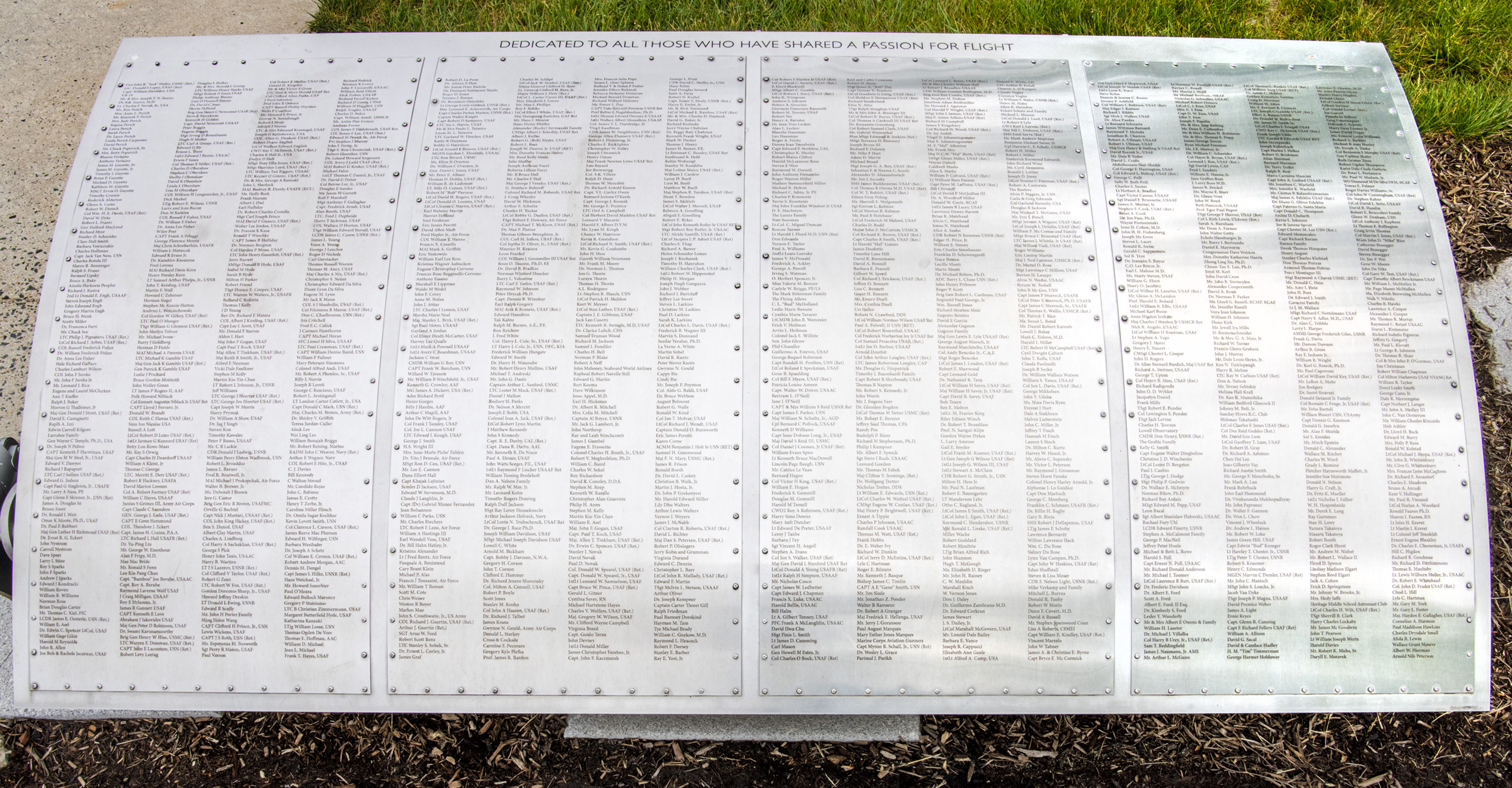Foil: 1 Panel: 4 Column: 3 Line: 36
Wall of Honor Level: Air and Space Friend
Honored by:
Mr. David A. Rossi
Article from The New York Times Obituaries, Tuesday, March 7, 2000
CAPT Chester M. Lee, USN (Ret), who survived the kamikaze sinking of a destroyer and later helped NASA send all manner of spacecraft into the heavens, died on Feb 23, 2000 at a hospital in Washington. He was 80 and lived in McLean, Va.
Captain Lee worked until the day of his death, most recently as a special adviser to Spacehab Inc., a Washington company (provides services to the National Aeronautics and Space Administration (NASA)) that he helped build after leaving the space agency in 1987.
He had spent 23 years at NASA, where he played important roles in the Apollo moon landings, in the first joint space venture between the United States and the Soviet Union and in the development of the shuttle program.
As mission director for the last six Apollo launchings — including the white-knuckle Apollo 13 mission, which limped back to Earth after an oxygen tank exploded in midflight — Captain Lee had the uneasy task of straddling two worlds: the bureaucratic, often political milieu of NASA headquarters in Washington and the no-frills environment in which astronauts and their craft were prepared for voyages.
Capt. Eugene A. Cernan, who in 1972 became the last astronaut to walk on the moon, recalled yesterday that Chet Lee, as he was known, spent a lot of time with the astronauts in flight simulators and walked the lava fields of Hawaii, which were used as training fields for lunar excursions.
"Unlike most of the folks in Washington, he just took a lot of personal interest," said Captain Cernan, now chairman of Johnson Engineering, a subsidiary of Spacehab outside Houston. "He just wanted to get down and dirty with us, and better understand the problems we were encountering."
Chester Maurice Lee arrived at NASA by an indirect route. He was born April 6, 1919, in Derry, Pa., the son of Joseph and Mary Lee, who had immigrated from Italy. He graduated in 1942 from the United States Naval Academy and the Navy sent him to M.I.T. for radar training.
Two years later, he was a gunnery officer on the Navy destroyer Drexler when, on May 28,1945, it was attacked by Japanese kamikaze pilots off Okinawa. The ship sank in less than two minutes, killing 158; Chet Lee was among the 52 who survived.
After the war, Captain Lee began training intensively in missile systems. He was active in the Navy's development of the Polaris missile, which was designed to be launched from submarines. He then commanded the destroyer Gyatt and, from 1963 to 1964, a destroyer group.
The missile training caught the attention of NASA, and in 1965, when the agency was trying to meet President John F. Kennedy's goal of putting a man on the moon, Captain Lee became an assistant mission director for the early Apollo missions.
His career at NASA gave him a firsthand look at some of the agency's finest moments and its most desolate. On Jan. 27, 1967, he was present in the blockhouse at Cape Canaveral during a simulated countdown for Apollo 1. When a fire broke out on board, three astronauts were killed. Captain Lee had been monitoring activities in the cabin through headphones, his daughter said.
Later, as director of shuttle operations, the NASA official briefed a group of candidates for the "teacher in space" program about the risks they were facing. Among those in the group was Christa McAuliffe, who was killed when the shuttle Challenger blew up shortly after liftoff in 1986.
But there were successes as well. Apart from the moon landings, Captain Lee oversaw the Apollo-Soyuz mission, in which Soviet and American astronauts docked in space in 1975. In an interview with a NASA historian during that period, Captain Lee recalled the difficulties, and in the end, the satisfactions of that effort, made as the cold war was still thawing.
"I guess the thing that impressed me also," he said, "in the spite of the language barrier and the obvious dual standoffish — suspicion, or whatever you want to call it, that dealing in the technical field was a heck of a lot easier. You could cut right to the mustard, right to the meat of the problem, and say, 'Hey, it's this way or that way.' You know, it's an engineering solution."
After the project ended, Captain Lee began working in NASA's shuttle operations, overseeing development of its payload program, which was expanded to include foreign governments and corporations. At Spacehab, he helped develop the pressurized modules used by shuttle astronauts to conduct experiments.
Captain Lee's enthusiasm for working with astronauts may have had a simple explanation: he would gladly have gone along on any of the missions he helped direct, those who knew him said.
"Believe me," said his daughter Virginia, "if he had been given the opportunity, he would have done it. Absolutely."
Wall of Honor profiles are provided by the honoree or the donor who added their name to the Wall of Honor. The Museum cannot validate all facts contained in the profiles.
Foil: 1
